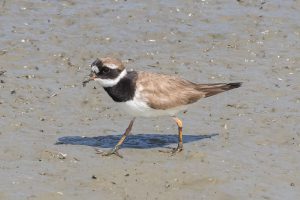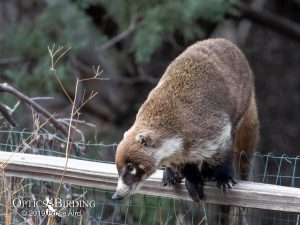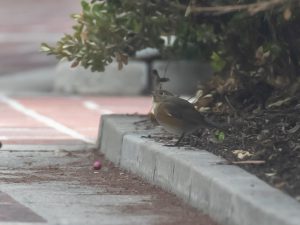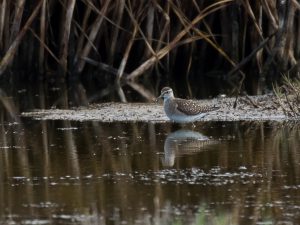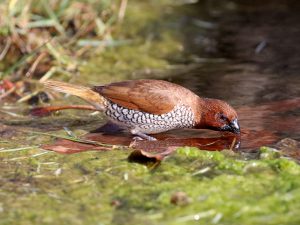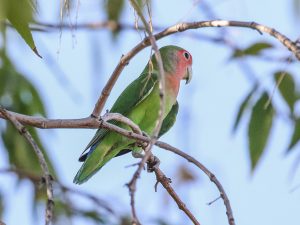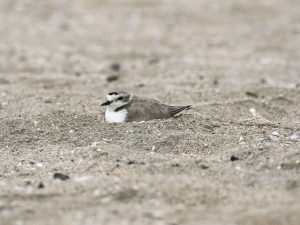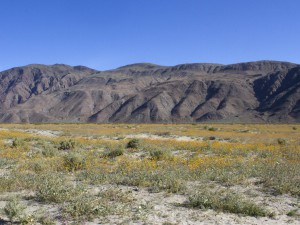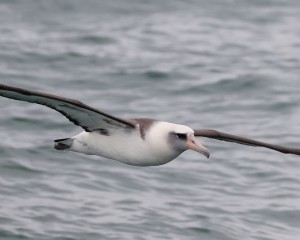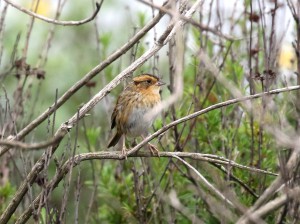While birding at San Joaquin Wildlife Sanctuary in southern California on 31-AUG-19, we found a plover with an unusually heavy black breast band. This bird was feeding on the mud of the ponds beside a handful of Semipalmated Plovers, and other shorebirds. Compared to nearby Semipalmated Plovers, this plover seemed slightly larger – just a tiny bit huskier and longer-winged. Further observation of the bird suggested we had found a wildly out-of-place Common Ringed Plover, Charadrius hiaticula. We sent word out to the local birding websites and hotlines, and at that point, the circus began!
What Makes It A Common Ringed Plover?
Many features that distinguish Common Ringed from Semipalmated Plovers (Charadrius semipalmatus) are minute and subtle. They can be very hard to observe, let alone document. There were seven Semipalmated Plovers clustered around the pond where the mystery plover was foraging. All of them were either females or juveniles; not a single adult male Semipalmated Plover was present. This was, in itself, a little odd. The unknown plover male really stood out with its very wide, black breast band. Continue reading

